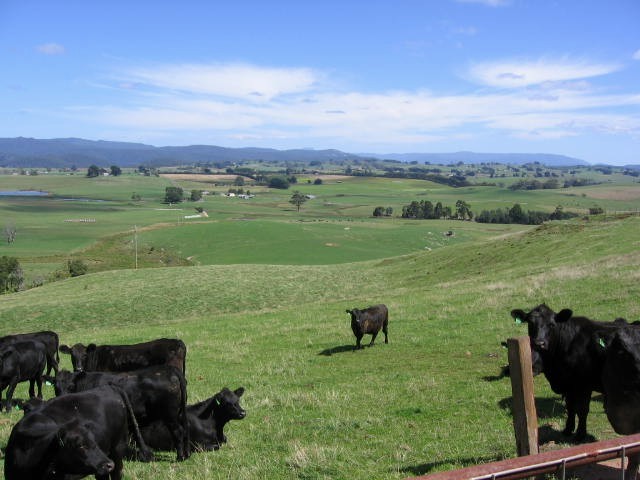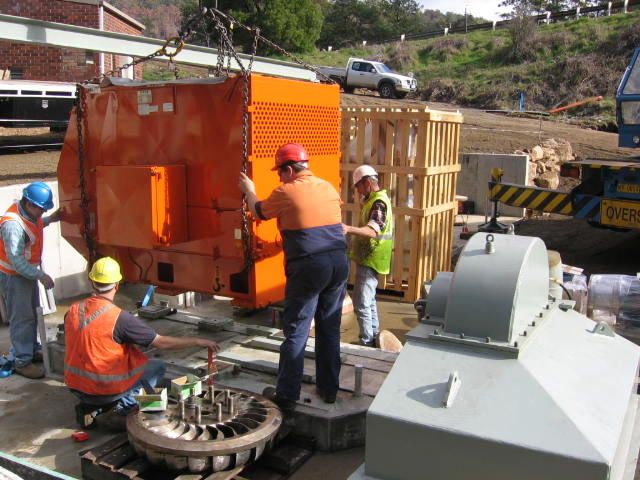
Commissioned by the Rivers and Waters Supply Commision in 1987. Management handed over to the Irrigators via a board of directors in 2002. Board of directors consists of a chairman and 5 other directors, all farmers of the district. Employees include 1 overseer and part time secretary. The irrigation scheme is a gravity fed system utilising the Cascade Dam as its water source, which is approx. 350 metres above sea level. Its capacity is 3450 mega litres. The Winnaleah plateau is the area which is irrigated with this water.
Soils are mainly Kraznozem based, clay loam type, which are ideal for cropping and pastures. The scheme has pipes that start at 750mm diameter, reducing down to 150mm at the property outlets. Pipeline is mild steel concrete lined from 750mm to 300mm. From 250mm to 150mm the pipe is ductile concrete lined. There is approx. 35 klms of pipeline, supplying an agricultural industry consisting of dairy, cropping, beef cattle and piggeries, over approximately 4443 hectares. The towns of Derby and Herrick plus rural housing also use this water. Recently a hydro power turbine was installed of the schemes pipeline via a “Y” piece at the Ringarooma River. This was built by a private company with the Scheme owning a part entity.

The purpose of this turbine is to create power and supply the grid during winter and of season times when the water would be spilling at the dam. It can produce 1150 kilowatts of power and will use 850 litres per second. Due to expansion of farming on the scheme it has been stretched to full capacity nearly every year. Although only holding 3450 megalitres, the scheme has delivered over 5000 megalitres due to the catchment area and run of. Every year, irrigators can be cut of irrigation supplies due to lack of water in the catchment. In the 2006-2007 season approx 98% of irrigators were cut of irrigation supply. It is because of this the board have been actively pursuing extra water supply opportunities. The most favourable supply being that of the Frome Dam approx 7 kilometres away from the existing scheme.
The Frome holds approx 2500 megalires with a possible expansion of the Winniford catchment above the Frome producing another 5000 megalitres. First steps in the possible addition to the scheme, was to approach the current irrigators to see what demand there was for extra water. A survey was sent out and irrigators responded with approx 3000 megalitres requested. A provisional study has been undertaken to assess the practical aspects of the new water supply and some estimates of expense of the project. It was advised that a hydro turbine would also be effective on the new pipeline also at the Ringarooma River crossing. Possibility for a larger turbine than the schemes current one also exists due to the head of water, the amount of water (if the Winniford is realised) and the possibility of constructing a 910mm pipeline from the Frome dam to the river crossing and power generator.
From there the water would be piped up to the scheme and branched into the scheme at the most effective position to benefit the schemes demands. Being gravity fed, the scheme struggles to maintain pressure at peak demands. The Frome Dams supply is approx 17 metres difference in height from the Cascade Dam, therefore the pressure would be similar. It is then possible to divide the schemes supply by shutting butterflies at various branches to effectively supply one half of the scheme with the Cascade and the other half with the Frome supply. This will keep the pressures higher while peak supplies are required. For example we produce constantly 400 litres per second in peak times. We could realistically supply 800 litres of water with both supplies supplying half the scheme each. Estimations so far predict an expense of $12,000,000 for the Frome pipeline and infrastructure.
Obvious benefits of more supply, is the expansion of the agricultural industry within the scheme, by giving irrigators confidence of a regular and larger water supply thus increasing employment and security in the industry. The board are currently going through the processes of obtaining a water license and trying to obtain funding through various sources. The Dairy Industry is the most favourable agricultural industry in Tasmania. There are approx 450 dairy farms, averaging 340 head of cattle. 90% of Tasmanian milk products are exported; nationally it is approx 50%.Cheese and milk powder are the predominant dairy products. Local producers on our scheme produce approx 4-5% butter fat and approx 3-4% protein. An average cow can produce approx $3000 worth of dairy product annually. Most farms are pasture based, this being the most economical feed. Tasmania produces approx 8% of the countries milk products and receives 12% of the countries rainfall. With expansion the Industry will most likely increase supply to 10% of the countries milk products.
The Poppy industry is solely Tasmanian based, with 3 companies contracting farmers to grow the poppies for opium and medicinal products.
The Dorset Economic Development Group is currently lobbying the State and Federal Governments, to develop approx 70,000 megalitres of water catchments in North East Tasmania. These new irrigation areas could have the potential to support 50,000 head of dairy cattle.